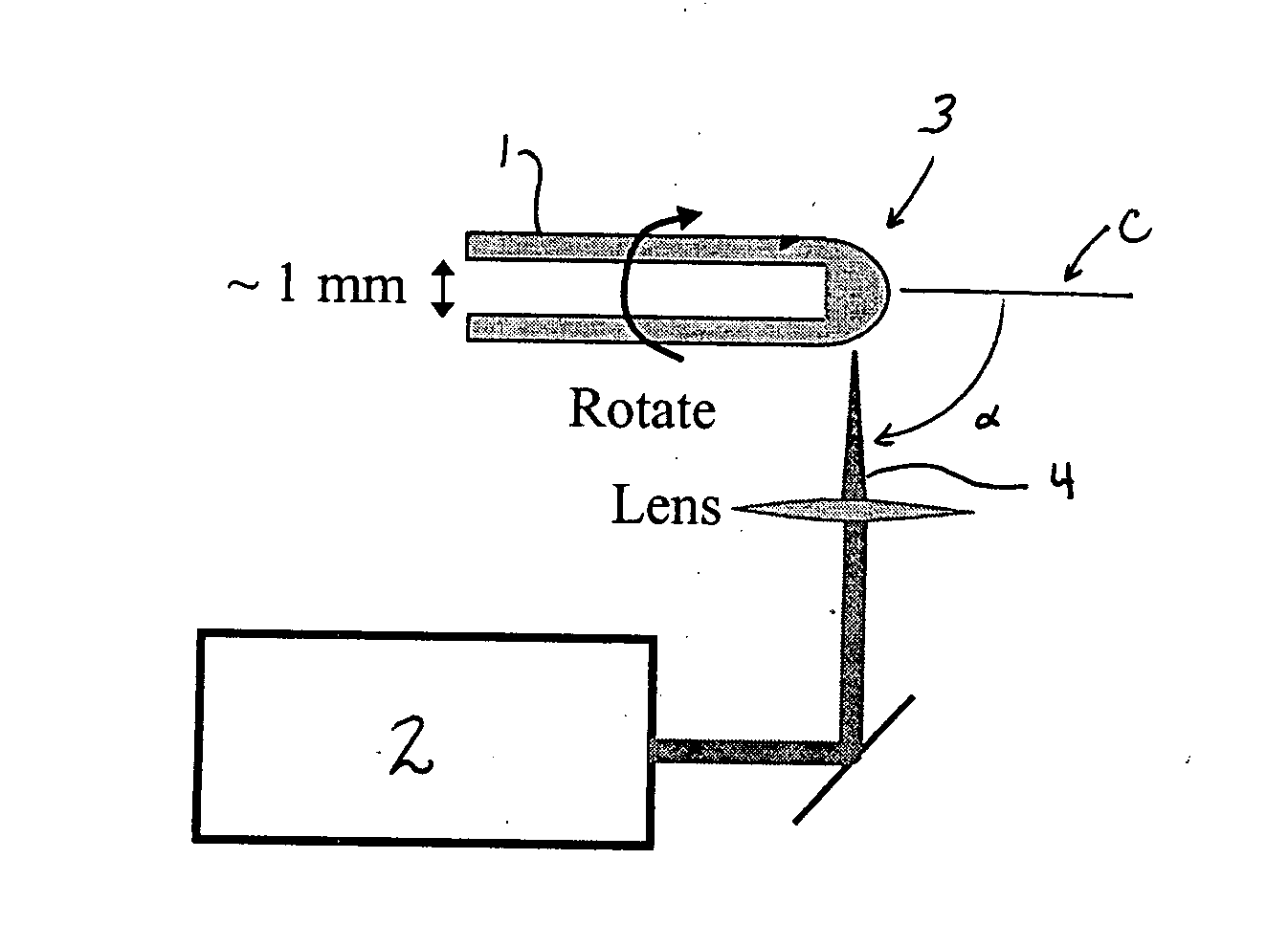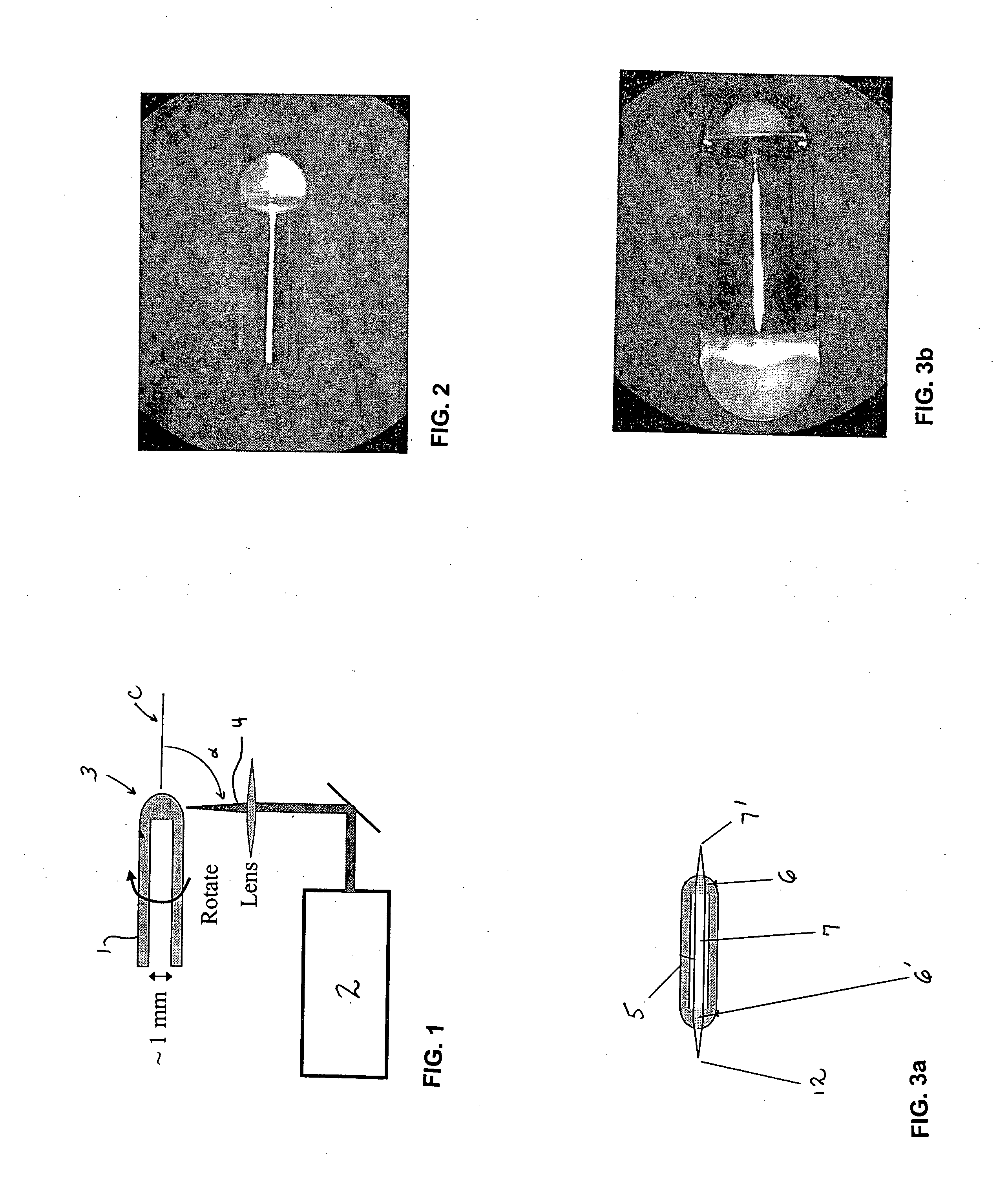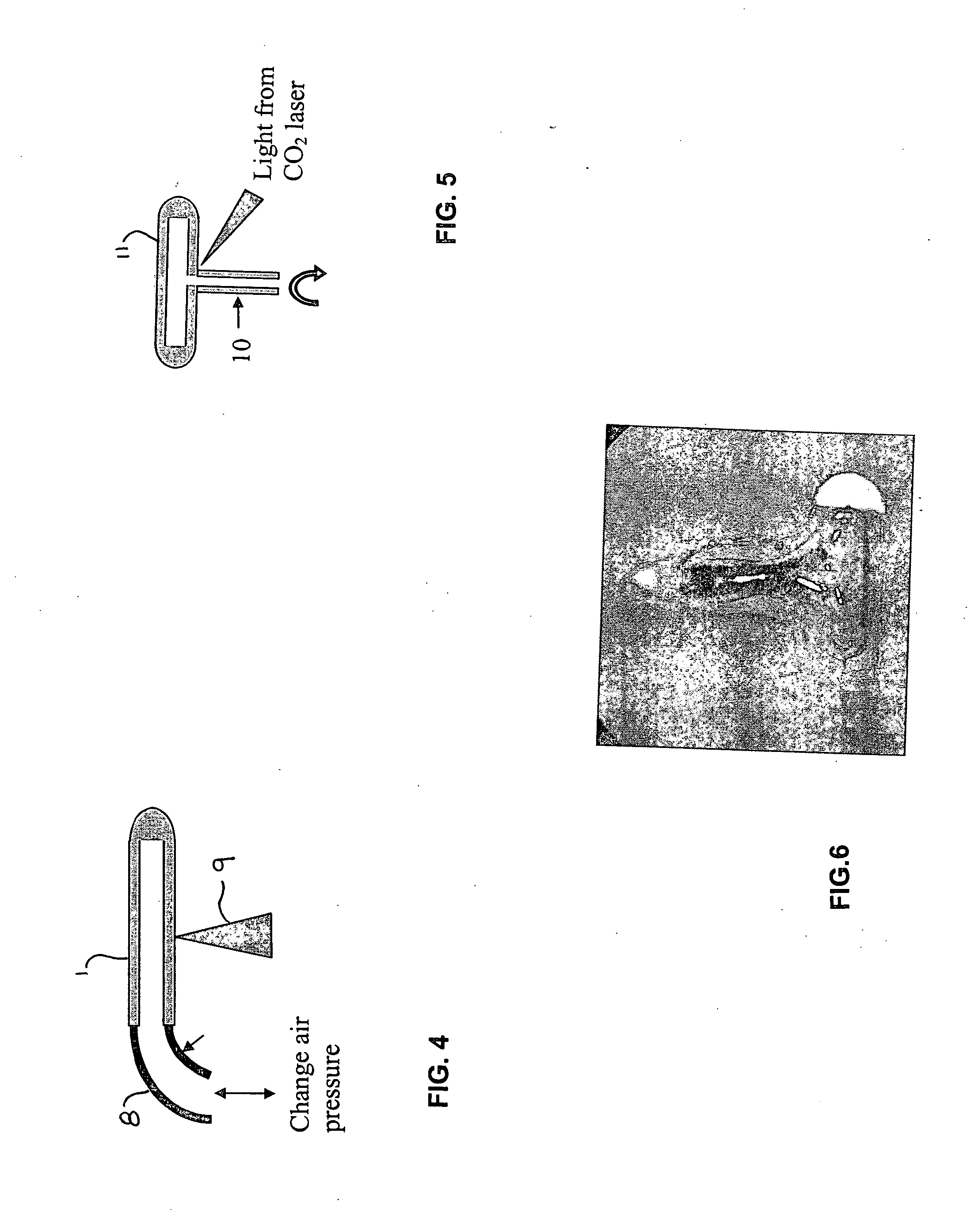Micromachined alkali-atom vapor cells and method of fabrication
a technology of micro-machined alkaliatoms and vapor cells, which is applied in the field of compact gasfilled cells, can solve the problems of limiting factors that determine the size, low power capabilities, and the ultimate low cost of the final produ
- Summary
- Abstract
- Description
- Claims
- Application Information
AI Technical Summary
Benefits of technology
Problems solved by technology
Method used
Image
Examples
Embodiment Construction
The present invention is directed to compact gas-filled cells. More particularly, the present invention relates to methods of fabricating compact hollow cells and filling the compact cells with alkali-atom vapor.
According to one embodiment of the present invention a process has been developed for fabricating small, sealed glass cells from hollow-core fibers. These cells can be filled with a vapor of alkali atoms, as well as a controlled environment such as a buffer gas. According to one fabrication process, light from a suitable laser such as a carbon-dioxide (CO2) laser at a wavelength of 10 μm is focused onto the tip of a hollow-core glass fiber. Energy from the laser is absorbed by the glass, melting it, and sealing the interior volume of the fiber in an airtight manner. Alkali atoms in a vacuum or a buffer-gas environment can be deposited into the fiber before sealing, confining the atoms / buffer gas in a controlled environment inside the walls of the fiber. In this way, compa...
PUM
 Login to View More
Login to View More Abstract
Description
Claims
Application Information
 Login to View More
Login to View More - R&D
- Intellectual Property
- Life Sciences
- Materials
- Tech Scout
- Unparalleled Data Quality
- Higher Quality Content
- 60% Fewer Hallucinations
Browse by: Latest US Patents, China's latest patents, Technical Efficacy Thesaurus, Application Domain, Technology Topic, Popular Technical Reports.
© 2025 PatSnap. All rights reserved.Legal|Privacy policy|Modern Slavery Act Transparency Statement|Sitemap|About US| Contact US: help@patsnap.com



